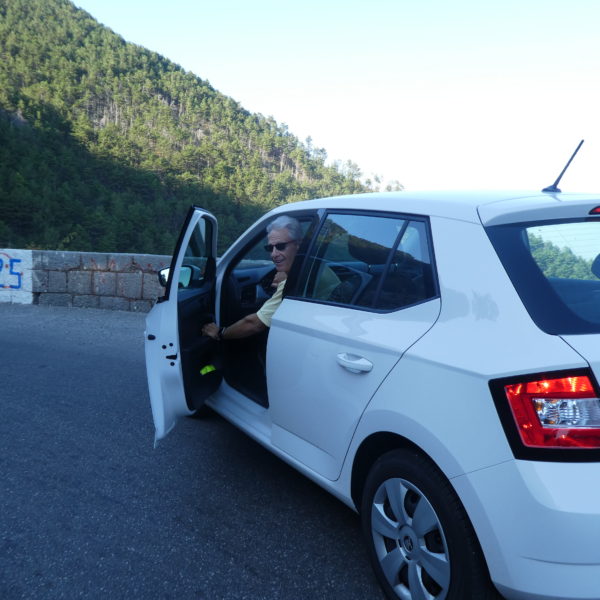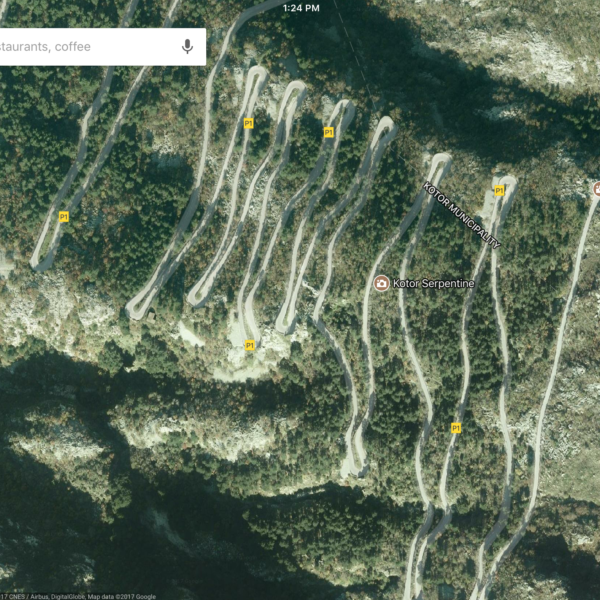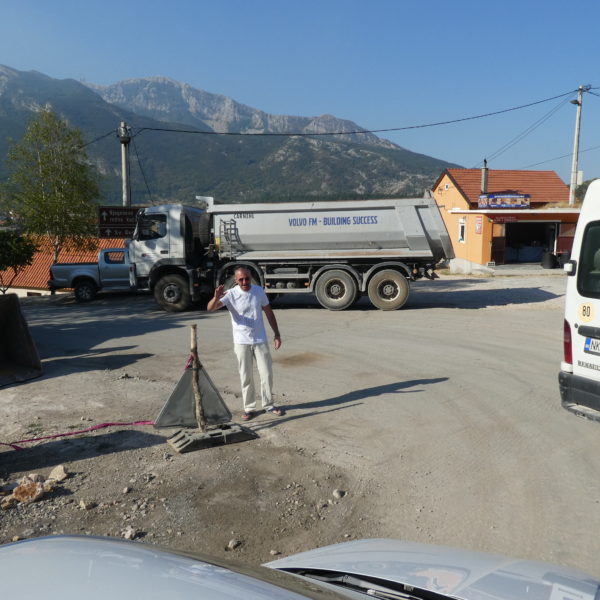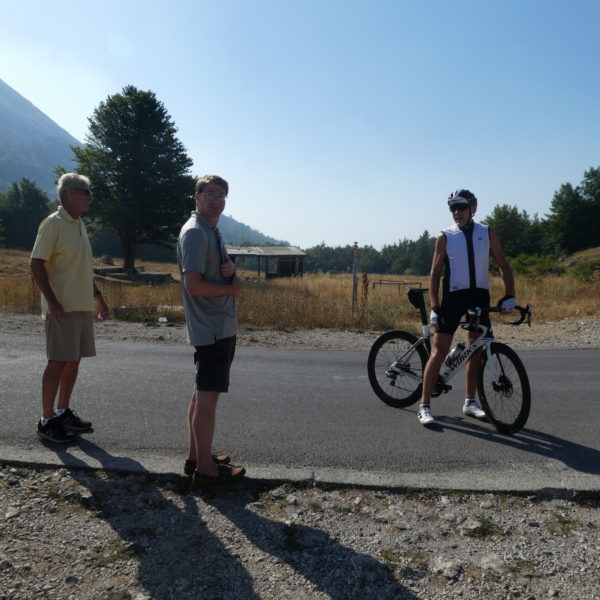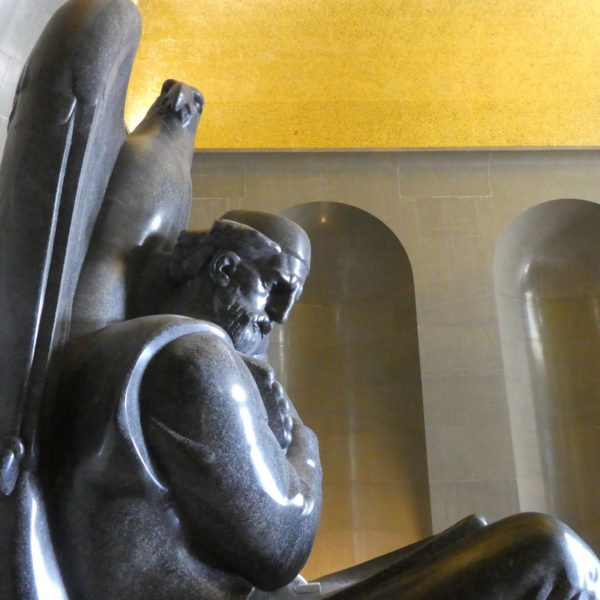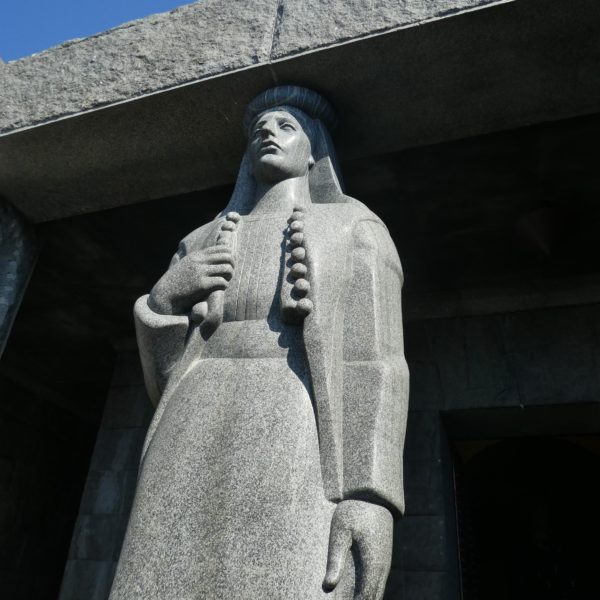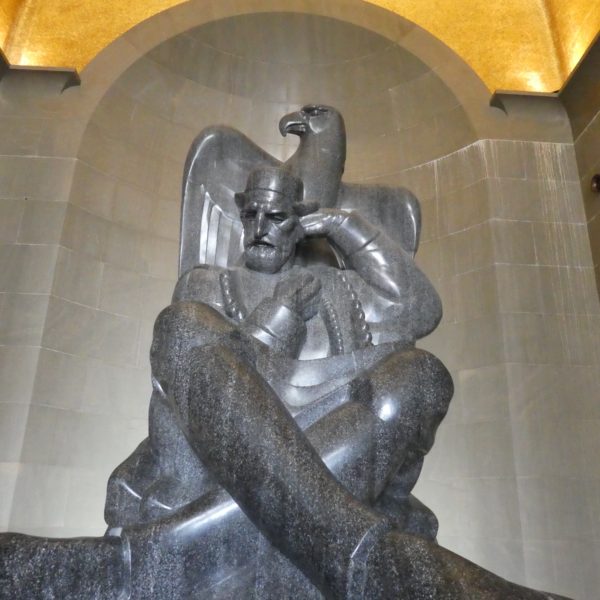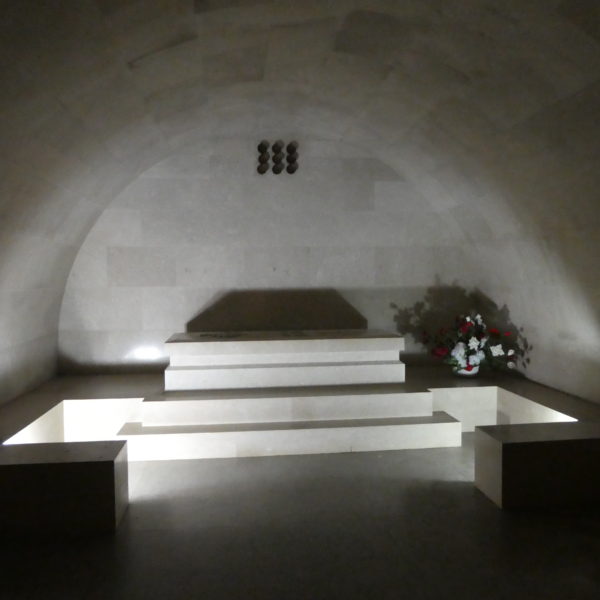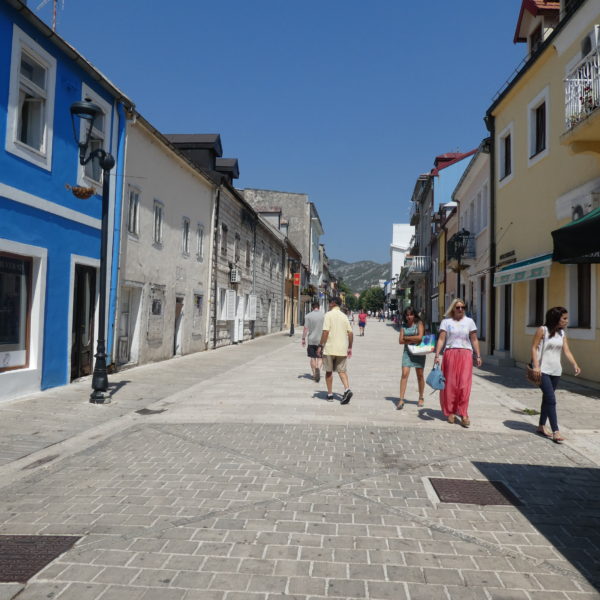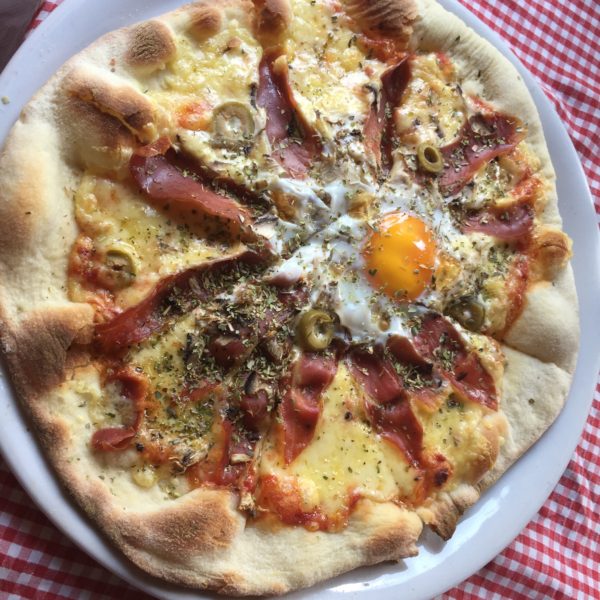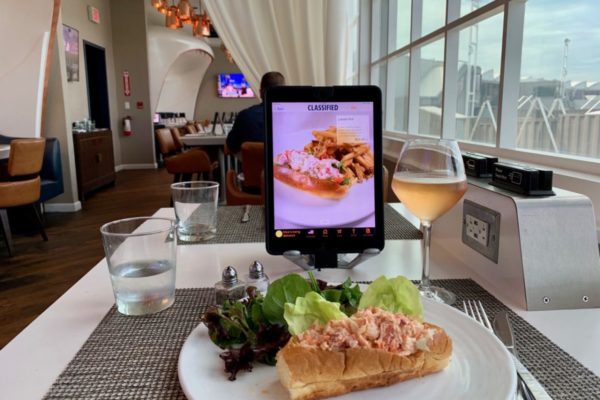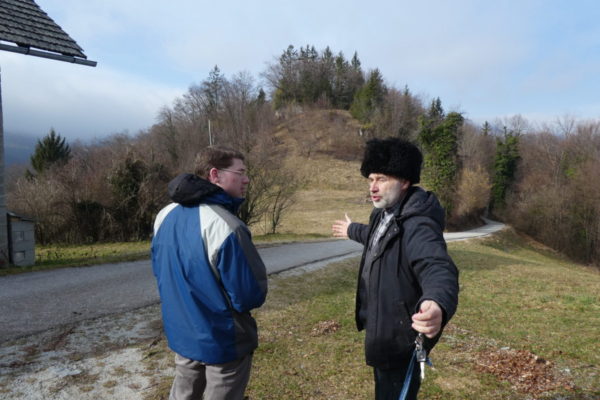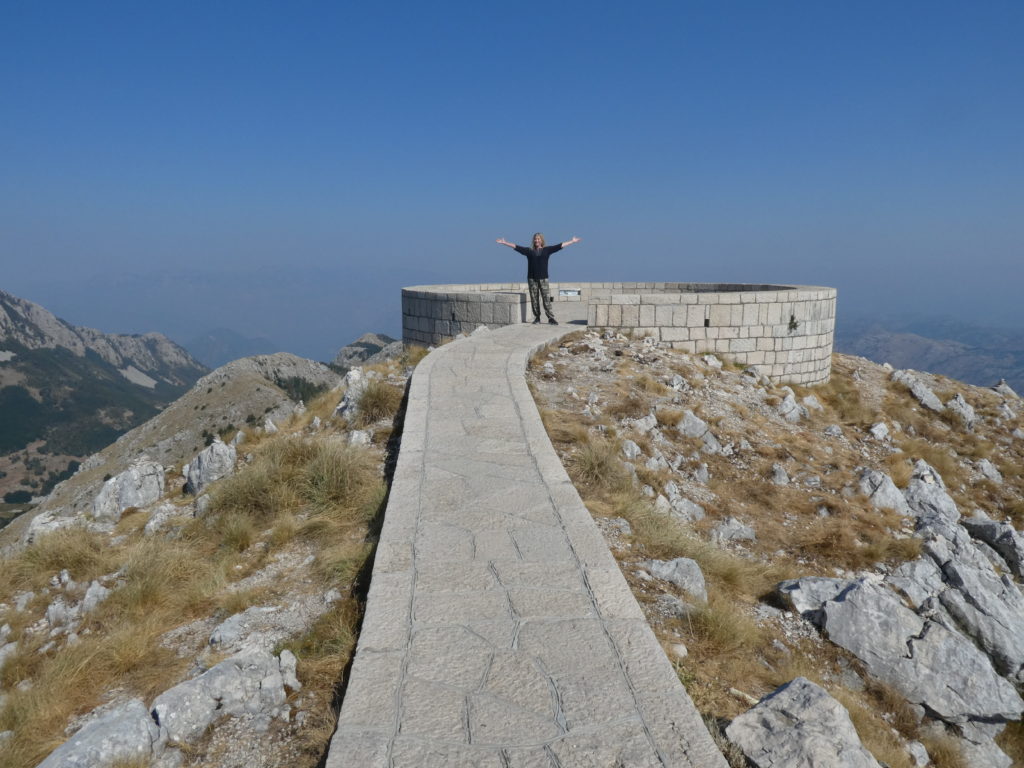

The 25 hairpin turns as you drive up the mountain are just the beginning of a wild ride to the peak of Montenegro’s national pride — and its former capital city, Cetinje. Fasten your seat belt. This is not for the timid.
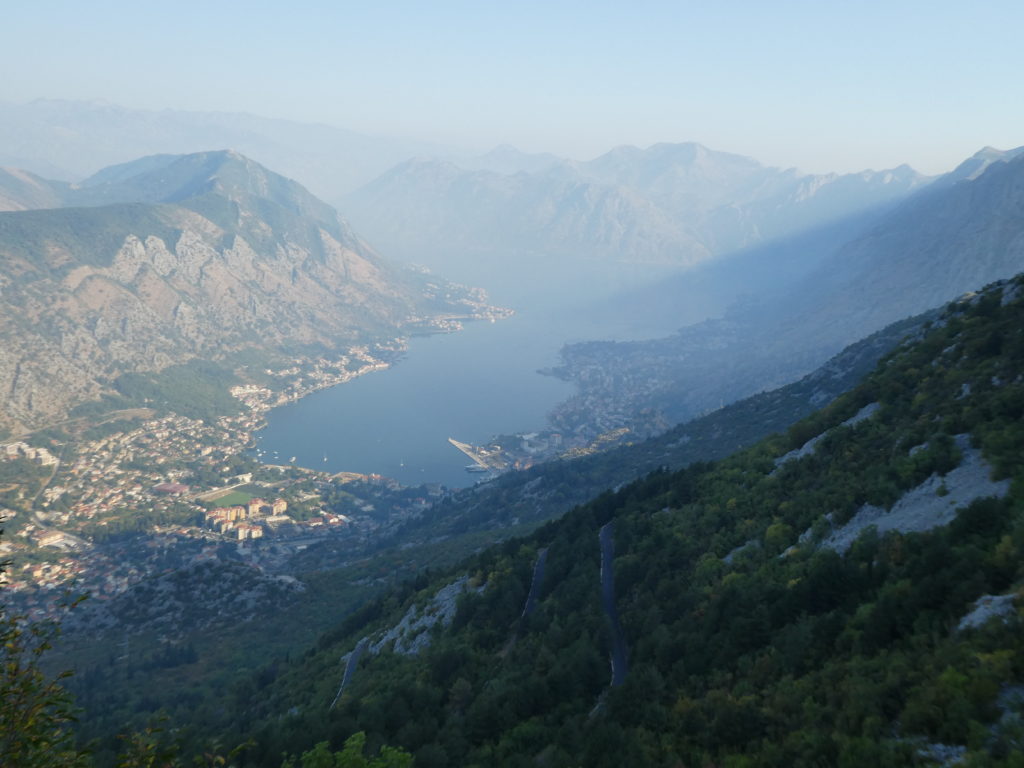
Hazy views of the Bay of Kotor. Pull over if you don’t want to drive off the cliff.
The drive begins in Kotor on the road marked P-22, connecting to P-1. Theoretically, it’s a single lane each way, but it’s barely wide enough for two medium-sized cars to pass each other. You might miss the spectacular views of the Adriatic Sea and the Bay of Kotor below because you are trying not to hit an oncoming car or swerve off a cliff.
We made it to the top of the Black Mountain that gave Montenegro its name, and kept going to the other side, descending into a pleasant valley in the Lovćen National Park. We entered what looked like a construction zone for a much-needed project to widen the road. Suddenly, we had to stop. A man was standing in the middle of what looked like a rock slide. “Road closed!” he warned, pointing us back toward a detour that was little more than a goat path with an even more narrow ribbon of asphalt. It ended at a T-intersection with no signs. Which way? The few roadside produce stalls were closed and deserted. We flagged down a passing bicyclist for directions.
King of the Mountain
We were near Njeguši, a tiny huddle of stone houses which was home to the Petrović dynasty. A short drive up the next steep hill brought us to the burial place of Montenegro’s most celebrated hero: Petar II Petrović Njegoš. We parked at the entrance to the mausoleum, built in the early 1970s as a symbol of pan-Yugoslavian pride.
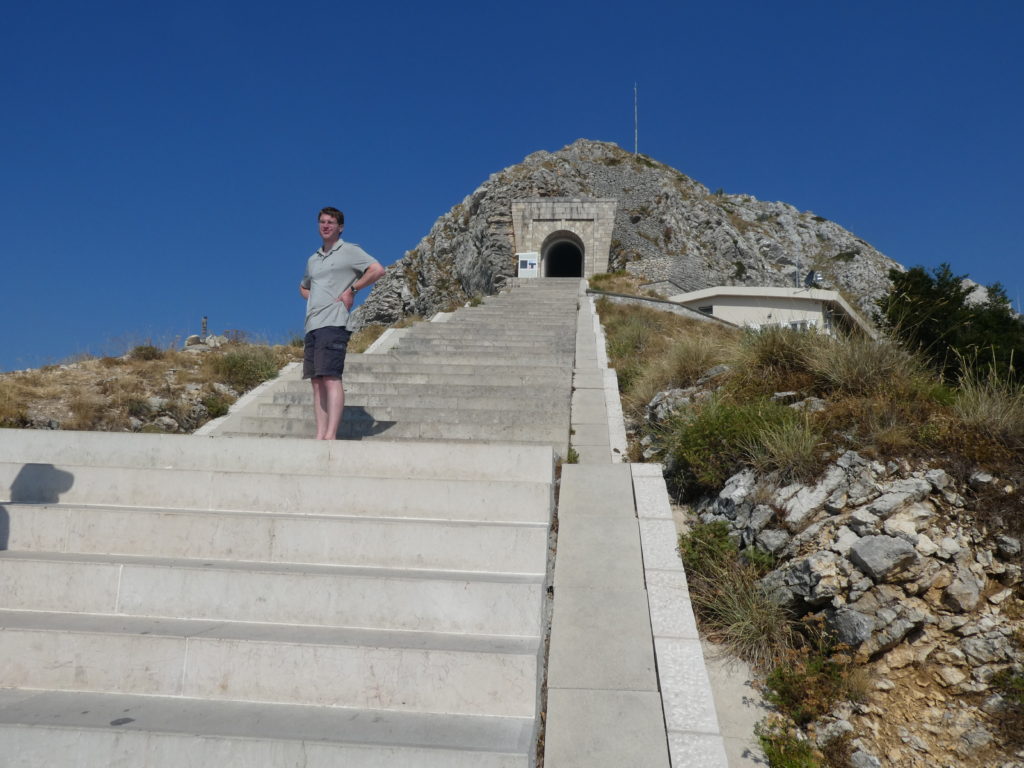
Get your morning workout on the 461 steps to a tomb with a view.
You’ll get a workout in a cool tunnel with lookout points as you climb the 461 steps to the top. Pay 3 euros for adults, 1.50 for students, to enter the mausoleum. A friendly ticket taker smiled when I said I was an American and my son spoke a few words in Slovene, which is similar to the Serbo-Croatian spoken by Montenegrins. “Ah, Melania Trump!” he exclaimed. He also told us that the Njegoš was an ally of celebrated Slovene poet France Prešeren.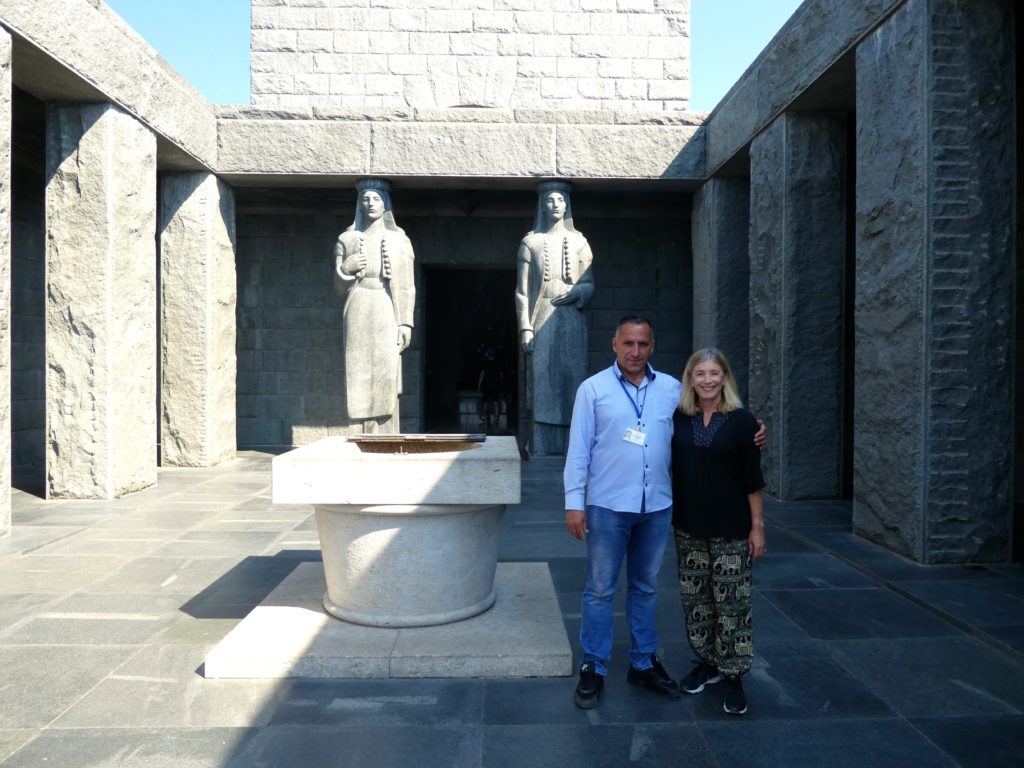
Tomb with a View
Guarded by stern images of his mother and sister, the poet-warrior king sits under a golden mosaic with an eagle, the image carved from a single piece of granite. You’ll marvel at how these monumental stones were transported to the top of the 1657-meter high peak (5,436 feet). On the day of our visit, smoke from a nearby fire obscured the panorama with a slight haze, but it was still like standing on top of the world.
Njegoš ruled from 1830 until 1851, is credited with not only modernizing his country’s government and taxation, but also with writing the poem that is Montenegro’s greatest literary work: The Mountain Wreath, dealing with the fight against the Ottoman Turks. He also started the first school for girls in Montenegro, located in Cetinje, our next stop. Fortunately, it was a calm drive on a wider, two-lane road through the park.
A Sleepy Town
Cetinje has the feeling of a town that history has left behind. Montenegro’s capital was moved in 1946 to what was then called Titograd, now Podgorica. The pretty main walking street, the Ulica Njegoševa — named for guess who, seemed nearly deserted in the summer heat, except for a couple of tour groups hanging around the shady cafes in the Dvorski Trg (Castle Square). Empty storefronts are concealed by murals depicting notable events in local history, such as the July 13, 1941 uprising of Cetinje’s communist partisans against the Nazis.
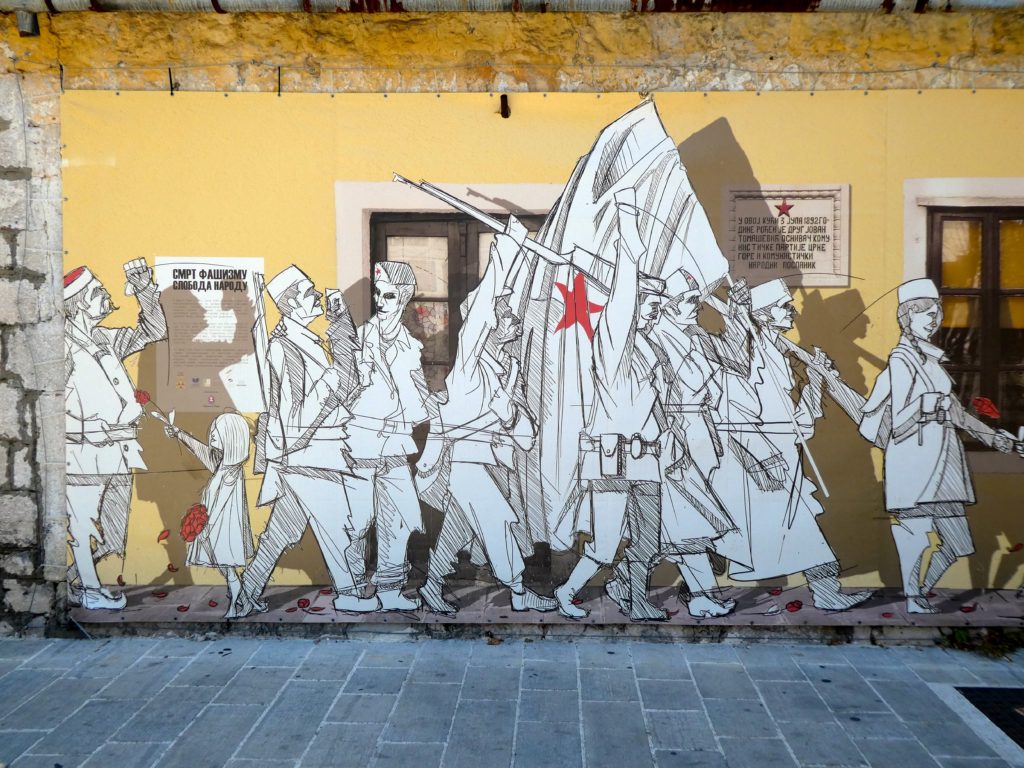
Empty storefronts covered by historical murals, like this one, the July 13th 1941 uprising.
Many of the notable buildings were once embassies of the western European powers. The Blue Palace, built in 1895 for Crown Prince Danilo, is an official residence of the Montenegrin president. Other palaces and the former Parliament building now house museums. The national museum offered a walk through history, mostly emphasizing the centuries of fierce fighting that led to Montenegro finally gaining independence in 2006.
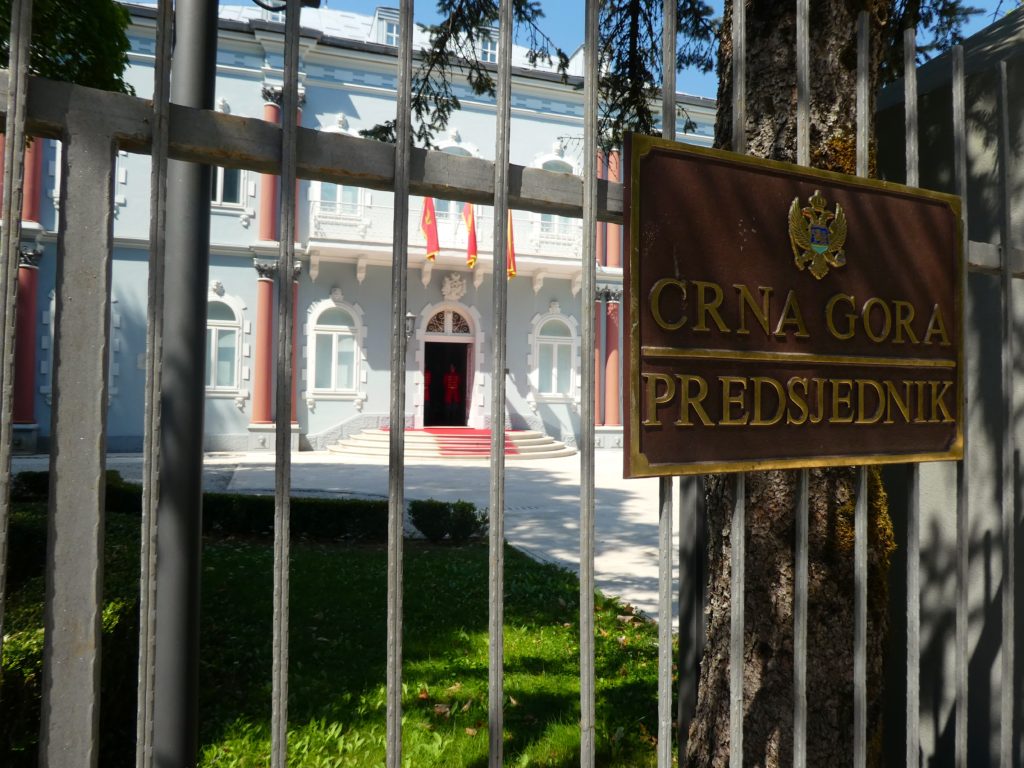
The Blue Palace built for the Crown Prince is now the President’s House.
Coverup at Cetinje Monastery
Not only a tourist attraction, this is a serious pilgrimage site for Orthodox believers. Anyone showing too much skin will be given a scarf to cover exposed knees or shoulders. But since no photos are allowed, I don’t have the priceless shot of my manly husband and son in their flowery coverups. Inside, A priest stood watch over the casket that is believed to hold the mummified right hand of St. John the Baptist. The visible hand looked like a shriveled piece of wood; the real one is concealed below.
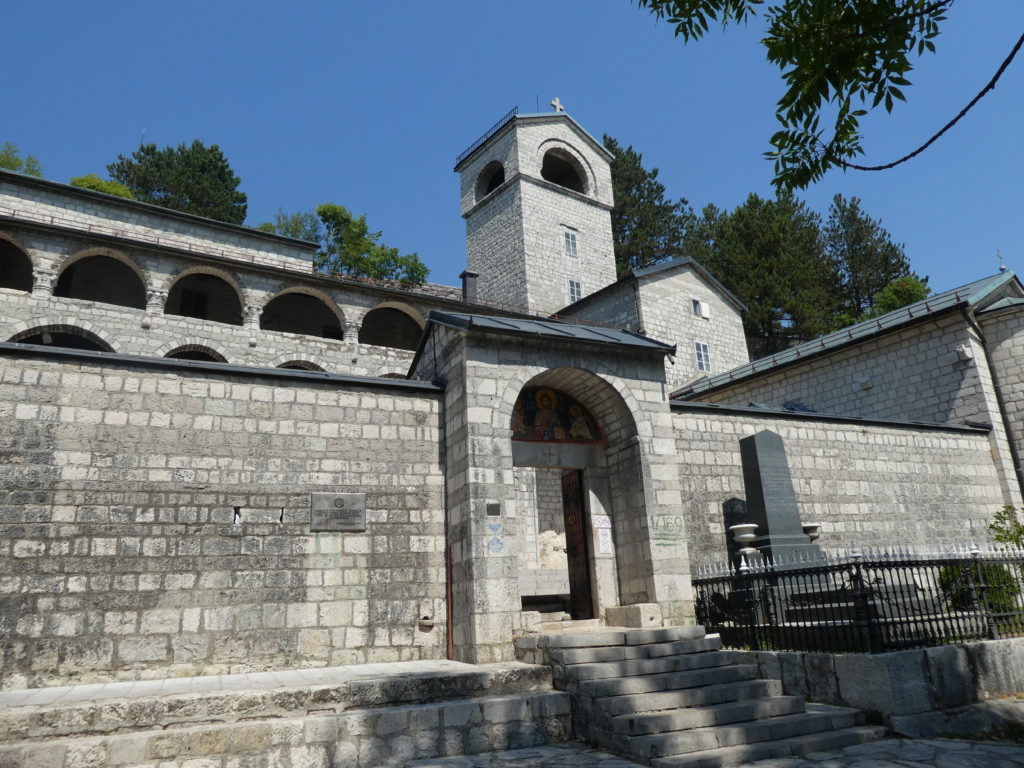
Cetinje Monastery, founded in 1484, guards the mummified right hand of St. John the Baptist.
During our visit, renovations were taking place in the church and it was difficult to tell if a famed shard of the True Cross was actually on display on the altar. Again, no photos. We also were unable to visit the locked Vlach Church, surrounded by a fence made from captured Ottoman rifles. It is near the Lovćen Fairy, a monument to Montenegrin-American fighters killed in World War I when their boat was sunk.
Lunch at Vinoteka
Walking back down the main street, we found Vinoteka. This welcoming restaurant has a lovely garden and a cozy bar with a cute upstairs room, but we opted for a glass-walled porch with air-conditioning. They try to help out visitors with a menu showing unappetizing pictures that don’t look anything like the actual tasty food! Meat lovers will enjoy the Montenegrin pizza, with local ham and a fried egg on top. Once was enough for the hairpin road, so we braved the traffic jam in the crowded resort town of Budva to return to Kotor.
Terry’s Travel Tips
Getting an early start meant fewer near-collisions on the hairpin road, and parking right at the base of the mausoleum steps. If you arrive later, you’ll have to park a lot farther down the mountain.
Click here to save money by booking your rental car ahead of time with Auto Europe before you leave the United States.
Want more off the beaten track adventures like this? Like @strangersinthelivingroom on Facebook, and sign up for the occasional email when there is a new post.
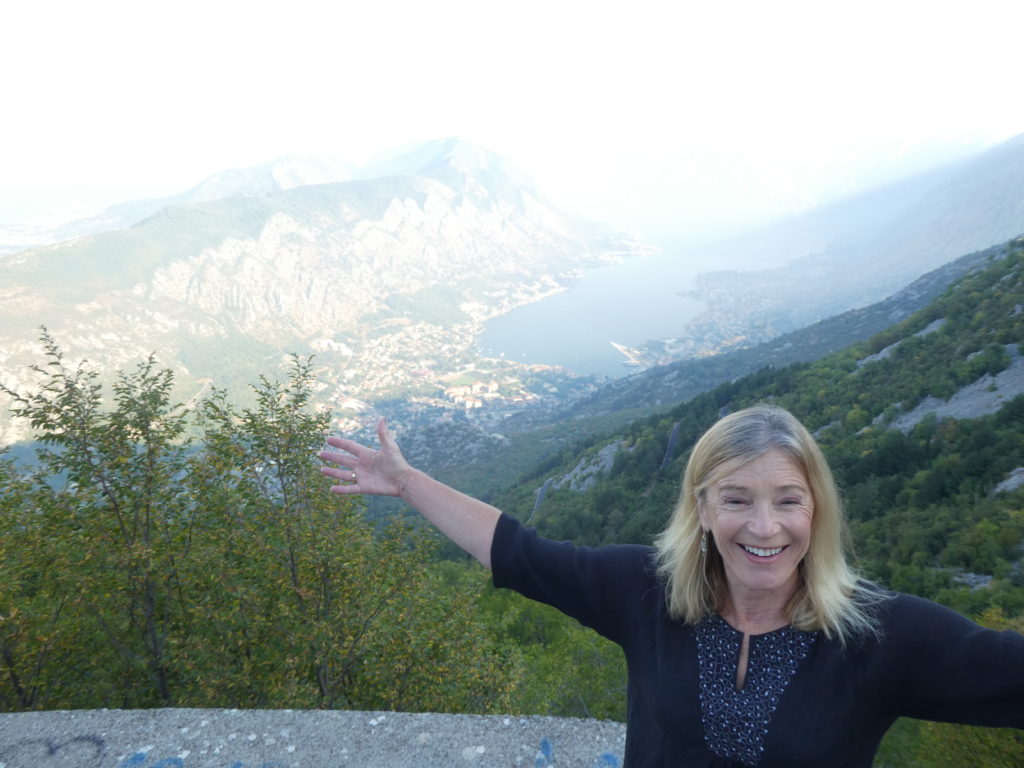
Once was enough for the hairpin road. We headed back through the traffic jam in Budva.

